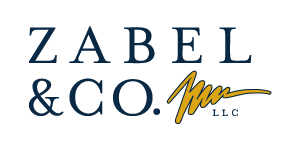Owning a business comes with many risks, and it is the responsibility of the business owner to mitigate these risks effectively. Running a business presents a myriad of challenges, spanning from financial and legal risks to the ever-present threat of cybersecurity. To maintain the vitality and success of your organization, it is essential to have proven risk mitigation strategies in place. No one wants to find themselves in a situation where their entire livelihood is at risk. Every business owner should be familiar with these risk mitigation techniques:
Policies and Procedures
Setting up accurately defined policies and procedures is of utmost importance when it comes to risk mitigation. These guidelines serve as a roadmap for employees, providing them with a clear path to follow and ultimately reducing the occurrence of errors. It is crucial for companies to have a comprehensive handbook that outlines not only the day-to-day operations and safety practices but also the technological aspects and other relevant practices of the business. Employees should have a thorough understanding of the risks associated with their roles and the necessary steps to mitigate them.
In order to ensure the effectiveness of these guidelines, it is essential to periodically update the handbook to reflect any recent changes in operations, legal requirements, and industry trends. This ensures that employees are equipped with the most up-to-date information and practices, enabling them to mitigate risks more effectively and maintain a safe and compliant work environment.
Documentation
Effective documentation processes are crucial for mitigating risks and ensuring accountability. By maintaining proper records, businesses can provide concrete evidence in the event of disputes or legal matters. It is imperative for these records to be well-organized and securely stored, encompassing all relevant documents such as contracts, receipts, and agreements.
For instance, in human resources management, businesses should maintain a comprehensive record of their employees’ performance evaluations, disciplinary procedures, and details related to promotions or transfers. This level of detail helps maintain transparency, facilitates informed decision-making, and fosters a fair and productive work environment.
Change Management
To effectively mitigate risk, every change made to the business must be deliberate and thoroughly analyzed. This entails considering every aspect of any proposed change and carefully evaluating its potential impact on the company’s operations. This evaluation process may involve conducting extensive meetings and consultations with various stakeholders, including employees, business advisors, legal advisors, finance experts, and industry consultants with relevant expertise.
By fostering a culture of collaboration and inclusivity, businesses minimize the likelihood of costly mistakes and maintain a distinct competitive edge in the ever-evolving market landscape.
Managing Cash Flow
Every business owner understands the critical importance of cash flow management. It is the lifeblood that keeps a business running smoothly and ensures its long-term success. Business owners must diligently monitor all revenue and expenses to optimize cash flow, leaving no stone unturned. A healthy cash flow can be cultivated by creating realistic financial goals and implementing effective strategies, paving the way for sustainable growth.
In cases where a business is struggling with cash flow, it is essential for the owner to take a step back and re-evaluate the financial and operational processes. Identifying areas that require improvement and making necessary changes is crucial for turning the tide.
Cybersecurity
Cybersecurity is a vital and rapidly evolving aspect of risk mitigation strategies in today’s digital landscape. As cyber-attacks continue to grow in sophistication and frequency, it has become more imperative than ever for businesses to prioritize and invest in robust cybersecurity measures.
To protect against threats, businesses should implement a multi-layered security approach. This includes encrypting sensitive data, deploying comprehensive firewalls, and regularly updating software to address vulnerabilities. Cybersecurity is not just IT’s responsibility; every employee plays a crucial role. Businesses can create a culture of awareness by providing comprehensive training and teaching employees to identify and report risks like phishing emails. These proactive measures mitigate risks and safeguard assets, data, and reputation in our complex digital world.
Get Expert Help with Your Risk Mitigation
Every business owner should be aware of the risks their company may face and prepare to mitigate them effectively. By working with a Business Advisor at Zabel & Co., you can collaborate with an expert to implement these risk mitigation strategies and create a robust framework to set up your organization for ongoing success and growth. Let’s chat!

